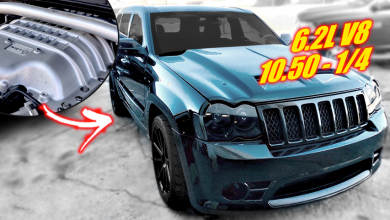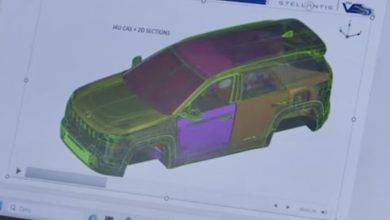Stellantis Idles Warren Truck Plant For Three Weeks After Supplier Fire
Aluminum Shortage Halts Grand Wagoneer Production Through Early November

Stellantis has temporarily halted operations at its Warren Truck Assembly Plant (WTAP) in Michigan following a devastating fire at one of its key aluminum suppliers. The shutdown, expected to last for at least three weeks, has forced the automaker to pause production of its full-size Grand Wagoneer SUVs.
According to a report from The Detroit News, the disruption stems from a September 16 fire at Novelis Inc.’s Oswego, New York facility—one of the largest aluminum suppliers in North America. The blaze damaged the plant’s hot mill section, severely impacting the company’s ability to produce the aluminum sheets used in vehicle manufacturing.
“Due to a parts shortage, Warren Truck Assembly Plant will be idled beginning the week of Oct. 13 for three weeks,” Stellantis spokesperson Ann Marie Fortunate said in a statement. “The plant is expected to resume production the week of Nov. 3.”
Aluminum Shortage Hits Jeep® Production –

The WTAP facility is home to Stellantis’ premium Jeep® full-size SUV lineup. Both the Wagoneer and Grand Wagoneer rely heavily on aluminum components, particularly for their hoods and doors. With Novelis supplying roughly 40% of the auto industry’s aluminum sheet metal, the fire has caused a ripple effect throughout the supply chain.
Eric Graham, President of UAW Local 140—which represents workers at Warren—confirmed the plant has been idled since earlier this week. The downtime is also expected to push back the launch of the refreshed 2026 Grand Wagoneer, originally scheduled to ramp up in October. That debut is now likely to be delayed until late November.
Supplier Scramble –

Spokesperson Julie Groover for supplier Novelis, said the company is moving quickly to restore operations and reduce the impact on automakers. “The fire impacted the plant’s hot mill, and we expect a reopening of that portion of the facility early next year,” Groover explained. “We’re progressing very well on the building restoration, including putting a new roof and ductwork in over the hot mill section.”
In the meantime, Novelis has shifted production to its other facilities worldwide to maintain a steady aluminum supply. “We’re working with our other plants around the world to source the necessary ‘hot band’ that is eventually turned into the aluminum used in cars,” Groover added. She noted that the rest of the Oswego plant remains operational while the damaged section undergoes repairs.
Broader Industry Effects –

While Stellantis isn’t the only automaker affected, the impact on WTAP is especially critical given the plant’s recent history. Production had already been reduced to one shift earlier this year due to slowing demand in the premium SUV segment. Now, the aluminum shortage adds another challenge as the automaker prepares for several new product launches across its North American facilities.
Despite the temporary setback, Stellantis remains confident in its ability to recover lost production time once aluminum supply stabilizes. The company has not yet indicated if employees will face temporary layoffs during the downtime.
A Tough Year for Stellantis Manufacturing –

This is not the first time Stellantis has faced supplier-related fires in 2025. Earlier this summer, the Toledo Assembly Complex—which builds the Jeep Wrangler and Gladiator—was forced into “emergency plant status” after a blaze at the CSP plant in Carey, Ohio, disrupted component supply. Production has since resumed there, with workers logging extra hours to make up for the lost output.
As for the Oswego plant, investigators continue to determine the exact cause of the September fire. Groover said Novelis’ primary focus remains on safety and restoring operations as quickly as possible. “We’re making strong progress,” she said. “Our goal is to get the hot mill section back online early next year so we can fully support our customers.”
Until then, Stellantis and other automakers relying on Novelis’ aluminum will have to juggle production schedules, source from alternate suppliers, and manage limited inventory—an all-too-familiar scenario in today’s volatile manufacturing landscape.
The back-to-back supplier issues highlight the fragility of global supply chains, even years after the COVID-19 pandemic first exposed their weaknesses. For a company as large and diverse as Stellantis, a single point of failure at a supplier can create a domino effect across multiple brands and production lines.
Source: The Detroit News






No replies yet
Loading new replies...
Join the full discussion at the Mopar Insiders Forum →